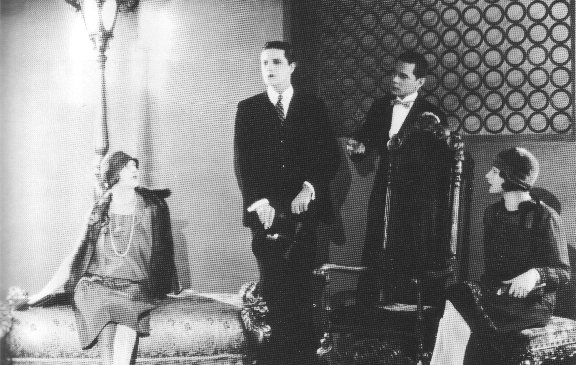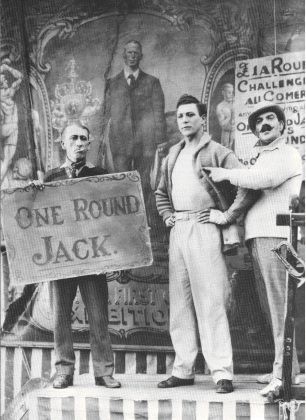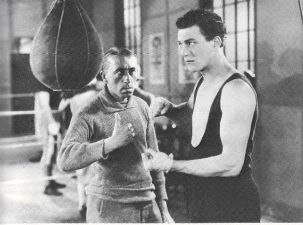|
The Lodger(1926) Director: Alfred Hitchcock
Screenplay: Alfred Hitchcock, Alma Reville from a novel by Mrs. Belloc Lowndes
CAST: Ivor Novello 

|
| Ivor Novello |

Downhill (1927) Director: Alfred Hitchcock
Screenplay:
Photography:
Music:
CAST: Ivor Novello 
Ivor Novello, Hitchcock directed the story of a young man seduced by an older woman based on a play by Ivor Novello. It was a filler, a film that his contract with the studio required.

|  |
The case of Jonathan Drew ( USA title) 
(Above) Hitchcock's first screen appearence as an extra, needing one more body to fill the screen. The momentary personal appearence later became a Hitchcock trademark, a career-long habit initially motivated by superstition and later continued as a gag. (if I have the photo I will mark as:*Cameo*) PLOT:
A suspense drama about a landlady who suspects her new tenant is Jack the Ripper, the Lodger told much of of its story in visual terms. It contained some bold special effects and introduced a theme that was to reappear in many of the director's films, that of a man accused of a crime he did not commit, an ordinary man caught in a web of extraordinary events. 
Easy Virtue (1927) Director: Alfred Hitchcock,
Screenplay: from a play by Noel Coward
Photography:
Music:
CAST: 
PLOT:
This silent filler had little merit, and nothing much to be remembered for, except that veteran silent-screen actress Bessie Love is a telephone operator whose expressions relay a crucial dialogue between two lovers. The Farmer's Wife (1928) Director: Alfred Hitchcock
Screenplay: Alfred Hitchcock,
Photography:
Music:
CAST: 
PLOT:
An adaptation of a successful stage play it remains an unmemorable film, rarely shown. |
 |
 |
|
The Ring (1927) Director: Alfred Hitchcock
Screenplay:
Photography:
Music:
CAST: 
PLOT:
The film, the only one Hitchcock remained fond of beside the Lodger of the silent years,is a romantic triangle melodrama with a boxing background. 
The Manxman (1928) Director: Alfred Hitchcock
Screenplay:
Photography:
Music:
CAST: 
PLOT:
Rugged locations are the best part of the film.
Hitchcock later said that the only good thing about it was that it was his last silent film 
|
|  |
 |
 |
|
Champagne (1928) Director: Alfred Hitchcock
Screenplay:
Photography:
Music:
CAST: Betty Balfour, 
PLOT:
Effervescent is the right word for this film, with surreal scenes and bubbling interpretation. Particularly good was Betty Balfour. 

Harmony Heaven (1929) Hitchcock Co-directed this film with Eddie Pola and Edward Brandt.
(these are the only infos I have about it) Elstree Calling (1930) The second and last of Hitchcock co-directions after 1926.
His co-directors were Andre Charlot, Jack Hulbert and Paul Murray. The four worked under the supervision of Adrian Brunet. This was already a talking movie, shot after Hitchcock had directed "Blackmail" |
|

